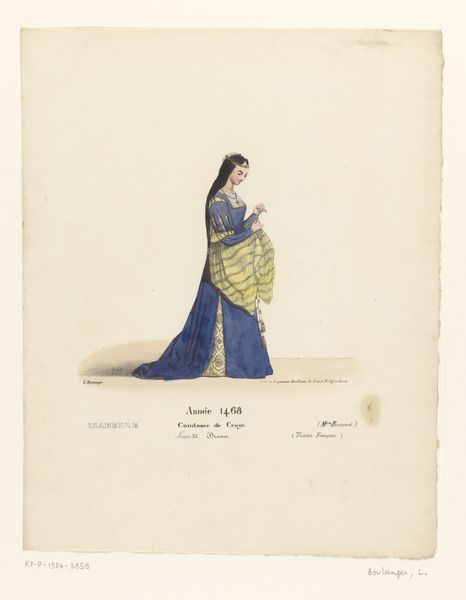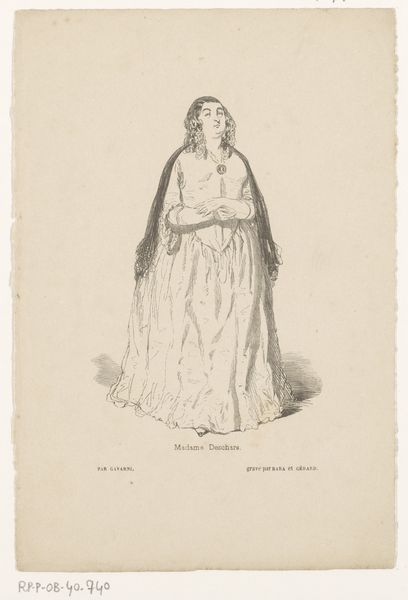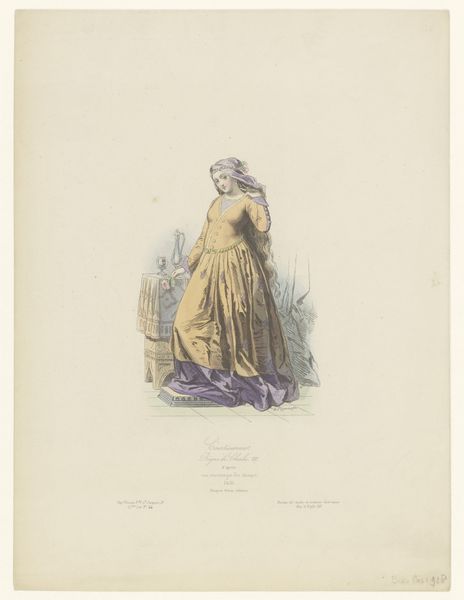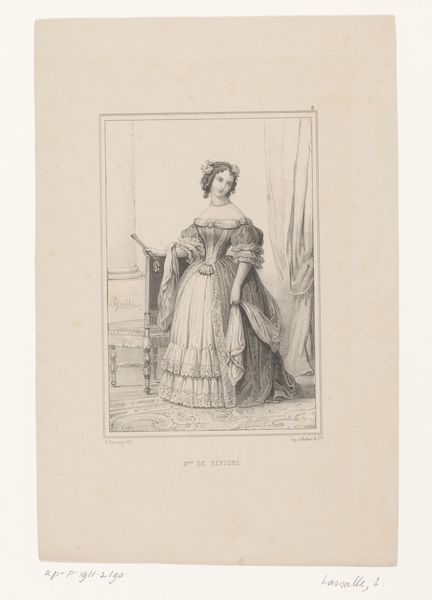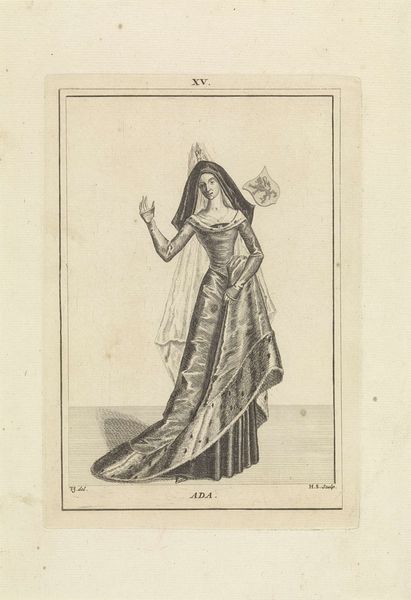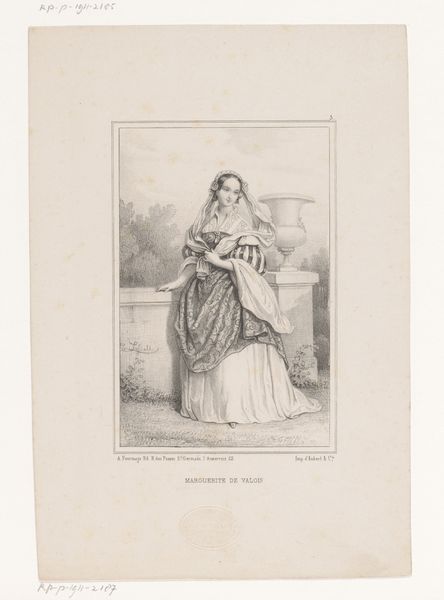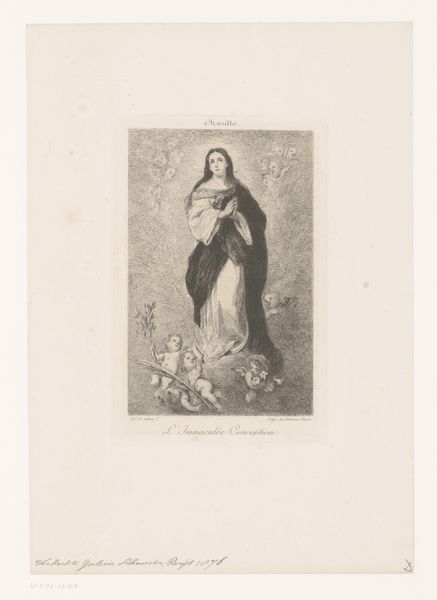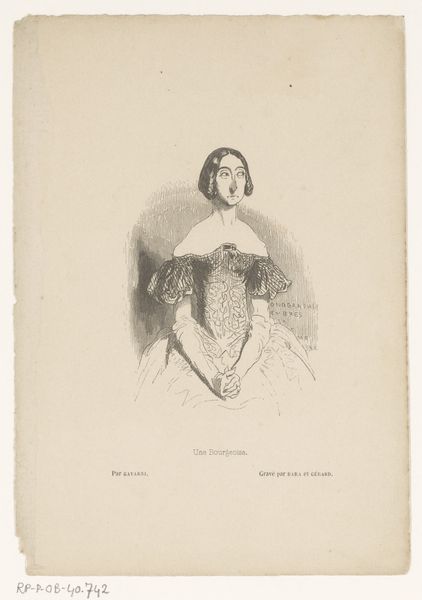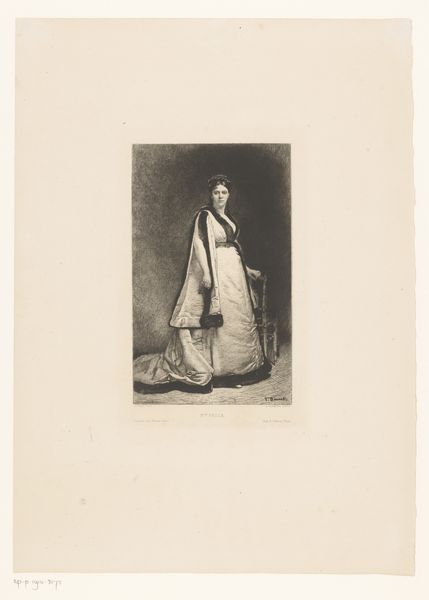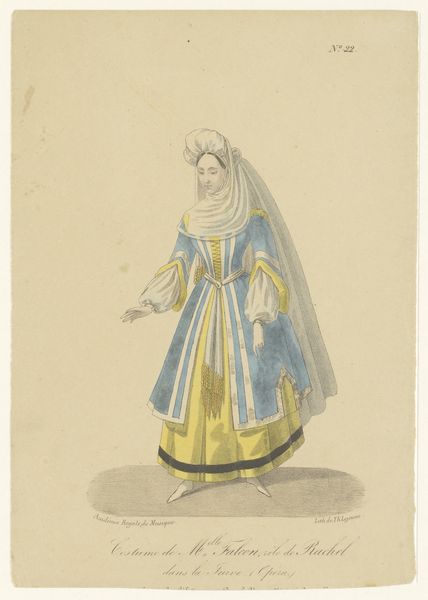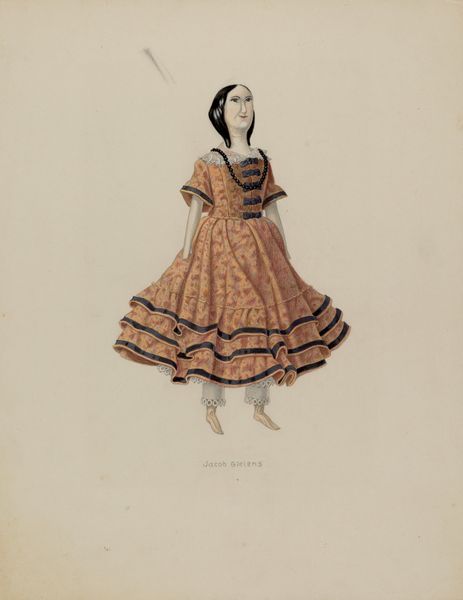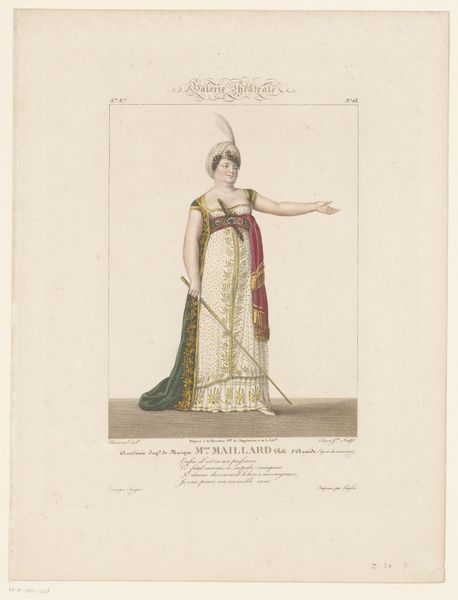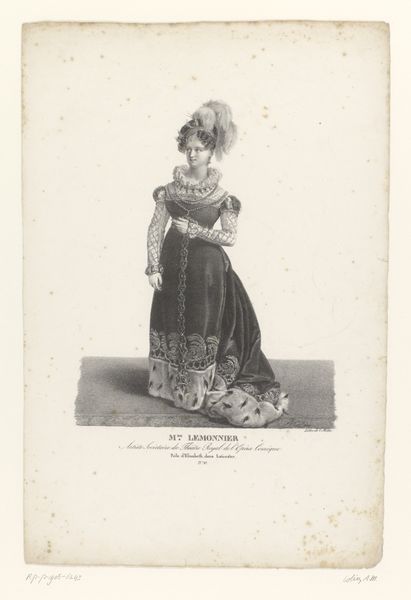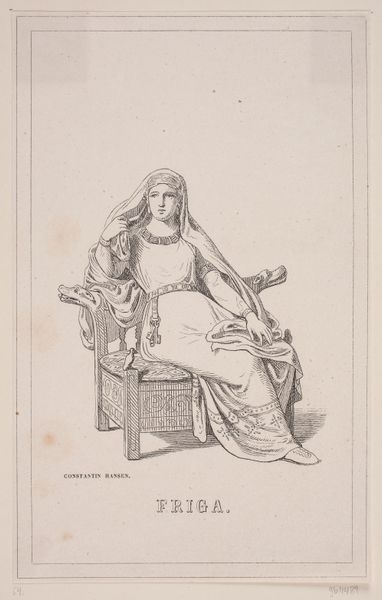
Kostuum van gravin Hameline de Croye uit het drama Louis XI à Péronne 1826
0:00
0:00
louisboulanger
Rijksmuseum
drawing, paper, watercolor
#
portrait
#
drawing
#
paper
#
watercolor
#
romanticism
#
costume
#
watercolour illustration
#
genre-painting
#
history-painting
#
cartoon carciture
Dimensions: height 336 mm, width 271 mm
Copyright: Rijks Museum: Open Domain
Louis Boulanger made this costume design for Countess Hameline de Croye using lithography and etching. While Boulanger was a celebrated painter, he also worked in the commercial theatre, designing sets and costumes. The lithographic process suited this perfectly, allowing for the relatively rapid production of vivid, striking images that could then be widely disseminated. Notice how Boulanger’s use of lithography accentuates the different textures and surfaces of the Countess’s clothing, from the heavy drape of her gown to the intricate details of her jewelry. The colors, achieved through etching, would have been chosen not only for their aesthetic appeal but also to convey specific meanings about the character’s status and personality. The design itself would have demanded the labor of many hands; seamstresses, embroiders, and jewelers each contributing their specialist skills. As such, Boulanger’s design is not simply a representation, but part of a complex and collaborative process that speaks volumes about the social and economic structures of the time.
Comments
No comments
Be the first to comment and join the conversation on the ultimate creative platform.
